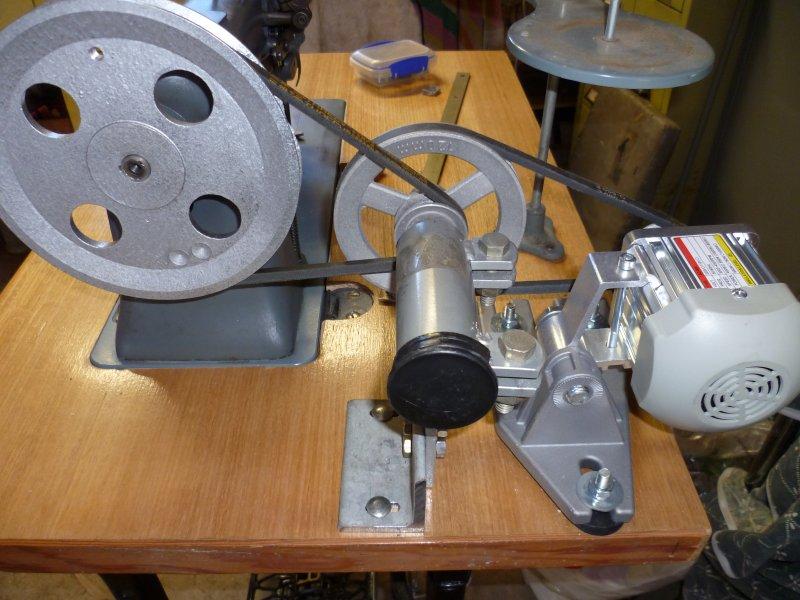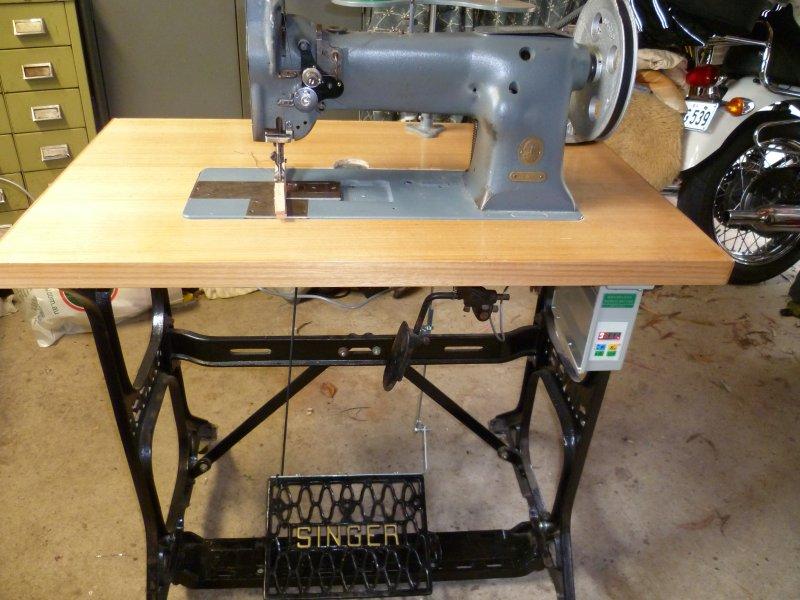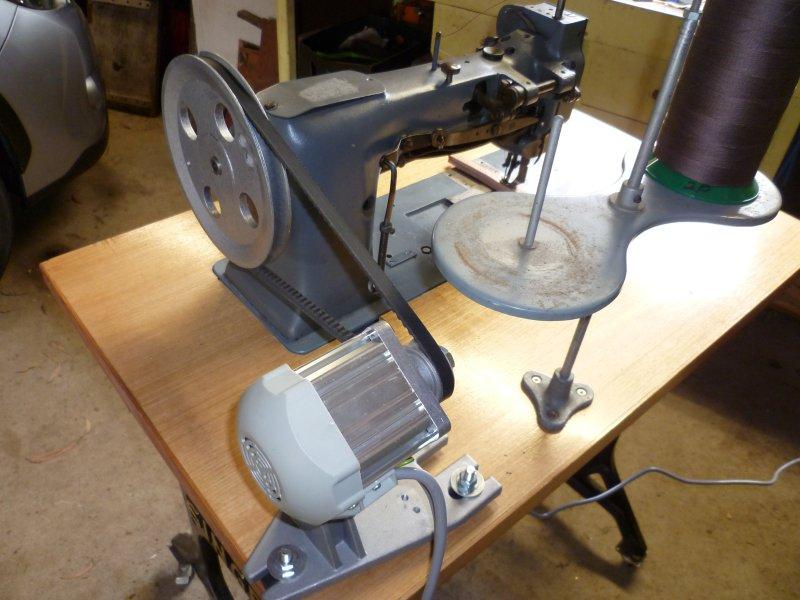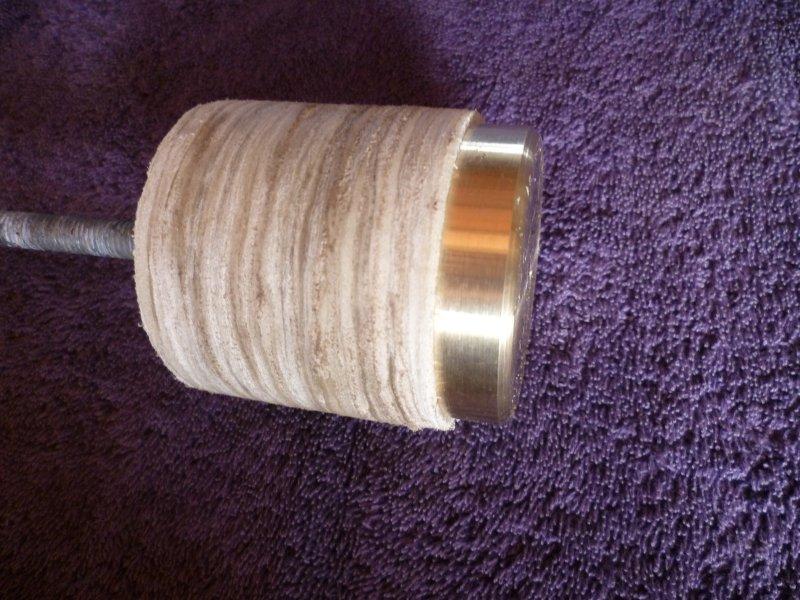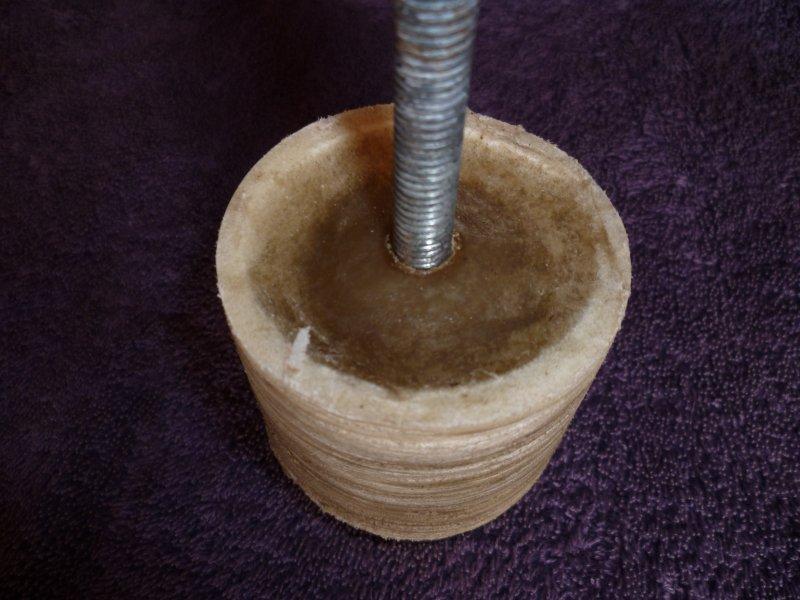-
Posts
4,792 -
Joined
-
Last visited
Content Type
Profiles
Forums
Events
Blogs
Gallery
Everything posted by dikman
-
I'm on holidays at the moment so not home. I can tell you that the servo is a fairly generic one that I bought off ebay, the vendor was here in Australia so I didn't have to buy from overseas. It's rated at "550w" but as you know that can mean anything! It's perfectly adequate for the machine it's on and can punch through 1/2" of veg with no problems.
-
Very observant, jimi, judging by the horizontal banding on the sides I'd say you're right.
-
Yes. The term refers to all the extras/gadgets/etc that you wouldn't get on a "standard" machine. In this case the pneumatic functions, which presumably require the original motor/control box to function. I guess it all depends how badly you want those functions.
-

PFAFF 145 needle adjustment in feed dog
dikman replied to DanishMan's topic in Leather Sewing Machines
Ahh, ok, you didn't mention that before. The only thing I can think of is that the needle bar is bent slightly. -
Brian, I am more than happy to acknowledge your superior experience in these things, but I must admit I'm with Constabulary on this. The feet look the same type as those on my little 201K (domestic) and I'm blowed if I can see any advantage in filing out a notch like that. Plus, as you say they are two different type of feet, so to prove that cutting the notch makes a difference the comparison should be between two of the same feet, i.e. before and after. Of course, I could be completely wrong...... I see you posted just as I did, Gymnast. Interesting tests, but as I said you should do the comparison between two of the same type of foot in order to get an accurate result.
-

PFAFF 145 needle adjustment in feed dog
dikman replied to DanishMan's topic in Leather Sewing Machines
I'm confused, you said the problem is that the needle isn't centred in the feed dog. Given that the needle bar can't be adjusted laterally the only way you can centre it is to move the feed dog, as Gregg has shown. -
It happens, mate. Not all sellers will do the "right" thing.
-

Help choosing a servo motor for a ferdco pro 2000
dikman replied to aaronthearcher's topic in Leather Sewing Machines
And it comes with a 2" pulley, which is nice. -

Farting around with leather.
dikman replied to hawgrider's topic in Gun Holsters, Rifle Slings and Knife Sheathes
I agree about the rivets, I've always thought they make a sheath look "cheap", much nicer without them (imo). For a first effort I reckon the gunbelt looks pretty good! Could the cracking in the leather be due to the type of leather used? One way of looking at it, you've already achieved a worn, used look right from the start. -
It's good that they're sending you the part but I'm still surprised that they carry replacement parts. I agree with SilverForge's comments and don't forget this is a hand-cranked machine, not a motor-driven high speed unit, so oil-carrying capacity of cast compared to plain steel is pretty irrelevant in this case. As long as the parts aren't binding or too loose then just oiling them occasionally should be more than adequate.
-
That last photo better explains how it fits, so yes, wouldn't be very difficult to fabricate a suitable replacement. ebay doesn't necessarily require you to return something, and will generally cover the cost if you have to, whereas with PayPal you have to return it first, and usually at your expense. Just for your info, much better if you can avoid having to do it, and in this case if it was me I'd just make a replacement part.
-
I'm surprised that any parts are actually available for these things. As it arrived damaged, thus not-as-described, you can lodge a claim with ebay for a refund if you have any problems with the seller (but you need to do it as soon as possible, or at least within 30 days). DO NOT lodge a claim with PayPal, stick to ebay.
-
I've been examining the maul and I don't think it's damp as it's quite hard if I poke it with a screwdriver. I know you can make glue from the rawhide, so I'm guessing that the moisture combined with the pressure from clamping it formed some sort of natural "resin" (for want of a better word). I'm going to be away for a while (holiday by the sea) but when I get back I think this will deserve a stacked leather handle.
-

Threaded Inserts for 3D Printed threads
dikman replied to chrisash's topic in 3D Printers and Lasers
Seeing that you're a leatherworker, can't you make a decent cover for your chair? It looks a bit tatty. -
Considering you already have the servo it makes sense to use it. Plus it will be a better motor than the little one.
-
This is the final version. The pedal is the usual arrangement, what I like about many of the servos is the control "box" is a separate unit so doesn't have to be mounted with the motor so is simply mounted underneath.
-
-
Yes, replacing the flywheel with a large pulley will help, but the best you might get is maybe 10:1 with a 10" pulley, which probably won't be enough based on what Wiz has said. Can you mount the servo on top of the table, behind the head unit? One or two have done that.
-

Juki dnu 1541s bent bobbin winding tention
dikman replied to rhdiv's topic in Leather Sewing Machines
No big deal, really. If they won't replace it then as Sark said squeezing it in a vice should straighten it. Might not come out perfect but it will still work. It's unlikely that the metal will be anything special, just ordinary steel. -

Help choosing a servo motor for a ferdco pro 2000
dikman replied to aaronthearcher's topic in Leather Sewing Machines
It's pretty obvious that a bigger motor (more hp) will draw more current, particularly when under load, and a brushless motor should be more efficient but if you're only a hobbyist then realistically neither of these will make much of a difference (particularly if you're using a speed reducer as well). It stands to reason, however, that if you can then always buy the bigger hp motor, as the price difference often isn't that great. I have both 550w and 750w motors and, coupled with speed reducers, I can't really tell any difference when using them. -

Latest 1851/60 Holster...
dikman replied to Chakotay's topic in Gun Holsters, Rifle Slings and Knife Sheathes
Wow! That is impressive. Very nice carving. And, as mike said, very clear photo. -

Kobe 1541S alternating lift height adjustment
dikman replied to plinkercases's topic in Leather Sewing Machines
Good to hear. -

Help choosing a servo motor for a ferdco pro 2000
dikman replied to aaronthearcher's topic in Leather Sewing Machines
The Techsew and the Toledo appear to be the same motor. The downside, imo, to all of them is that you have to get underneath the table to adjust the speed. Of course this is only a problem if you're constantly varying the speed setting, I suspect many of us generally work out the optimum setting that suits our needs and leave it set at that. If you have to keep adjusting the settings then one with a knob speed control will be better. Needle synchroniser - if you intend sewing fast (or long runs) then it may be useful, if you're sewing leather at slow speed then it's not necessary as you will have sufficient control to stop where you want to. Be aware that many of them won't work if you're using a speed reducer as well. Getting a smaller 2" pulley with the motor is always a good idea as well. In short, any of those motors should work fine for your needs. -
No worries, Yin. The dark centre of the mass doesn't feel damp, but it's obvious that it can't be completely dry yet. It has formed a pretty solid lump, though, as it can be screwed along the rod without any of the discs coming loose. I'm going away for a couple of weeks so I'll let it stand, open at both ends.
-
It has now been 16 days since I clamped the rawhide discs, and it looks and feels dry. I cast a brass disc and turned it down to fit on the end, threaded it and Loctite'd it to the end of the rod. To do this I had to remove the clamping piece and when I did it was obvious that it still hadn't dried in the centre!! I still had a tight mass, however, so I screwed it down the rod so it applied pressure to the brass while the Loctite dried. I removed the other clamping piece and I guess I'll just have to leave it open to dry off more. (Note to self, I think I'll stick to making them out of plastic milk jugs!!!!).



